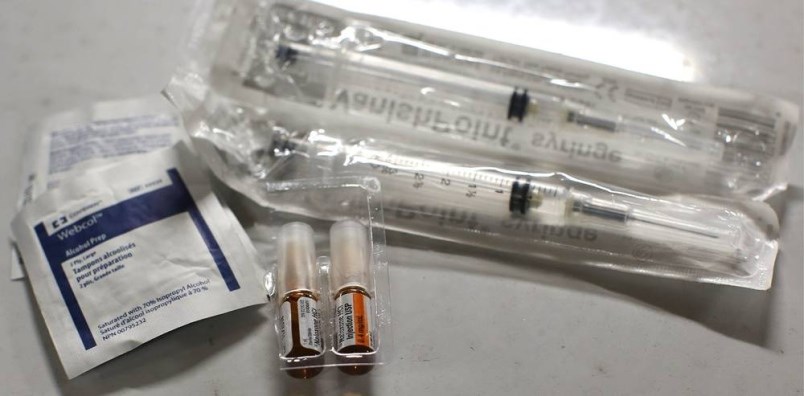Paramedics responded to more drug overdoses on Vancouver Island and across B.C. last year than ever before, as the COVID-19 pandemic led to an increasingly toxic drug supply.
B.C. Emergency Health Services released statistics showing a 12 per cent spike in 911 calls to deal with potential drug overdoses in 2020.
There were 27,067 calls compared to 24,166 in 2019.
The increase was even more dramatic in the Island Health region where calls jumped nearly 16 per cent to 4,466 from 3,852 the previous year.
“Certainly COVID is something that we’re all dealing with, but what’s been marching hand in hand with that is the unabated opioid crisis,” said Brad Cameron, the agency’s manager of patient care delivery in Victoria.
“So it’s not like it’s disappeared and gone away. I think it’s been complicated because of the isolation and the stress that COVID has brought into our social environment.”
The B.C. Coroners Service has attributed a rise in overdose deaths during the pandemic to the challenges of accessing harm reduction services as well as the increasingly toxic nature of street drugs — particularly illicit fentanyl.
Cameron said that means there are more calls, but they’re also more complex. Front-line workers find they’re using a lot more naloxone than ever before to reverse the effects of a drug overdose, he said.
He added that the overdose crisis is putting considerable strain on paramedics who are already coping with the impacts of the COVID-19 pandemic and new protocols and equipment for protecting themselves and others from the deadly virus.
“The only thing I would say is that we appreciate the patience of patients, because when we get to a call and we have to take the time to get properly donned up with this gear, it does take a few more minutes. People just need to be patient that we want to help. We’re there to help. We do. But it’s challenging times, it really is.”
Victoria had the third highest number of calls in the province at 1,569 behind Vancouver at 8,144 and Surrey at 2,467. Vancouver’s numbers were actually down from 2019 with a 14 per cent drop in the Downtown Eastside.
Tim Lehman, who works at an ambulance station on the Downtown Eastside, said in a statement that everyone in the neighbourhood has naloxone and he credited the support that paramedics receive from harm-reduction agencies.
A number of smaller communities, meanwhile, posted sharp increases, although the number of calls was relatively small. Sechelt, for instance, recorded a 112 per cent increase with 87 calls, while the 20 calls in Fort Nelson represented a 233 per cent rise.
On the Island, Nanaimo’s call numbers rose more than 18 per cent to 664, while Campbell River saw a 40 per cent increase to 249.




